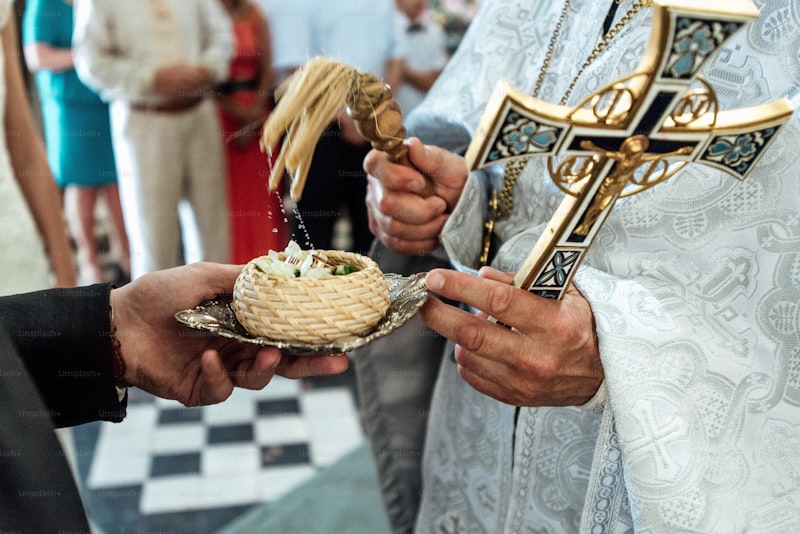Adapting Cultural Elements in Contemporary Weddings: A Journey Through Traditions and Modern Practices
Introduction
Weddings are a beautiful amalgamation of love, commitment, and traditions. As society progresses, many couples are increasingly interested in adapting cultural elements in contemporary weddings. This evolution allows them to pay homage to their roots while incorporating modern aesthetics and practices that resonate with their personalities. In this article, we will explore how couples can blend cultural traditions with contemporary trends, ultimately creating unique wedding celebrations that honor both heritage and modernity.
The Importance of Cultural Elements in Weddings
Cultural elements reflect the values, beliefs, and history of a couple's background. By incorporating these elements, couples can create a deeper connection to their heritage and share their story with family and friends. Moreover, cultural weddings often serve as a bridge between generations, allowing older relatives to feel included and valued. Here are some benefits of integrating cultural elements into modern weddings:
- Preservation of Traditions: Keeping traditional rituals alive helps maintain cultural heritage.
- Enhanced Personal Meaning: Personalizing the wedding ceremony with meaningful customs makes the event more significant.
- Inclusivity: Incorporating diverse traditions can create a festive atmosphere that celebrates different cultures.
Popular Cultural Elements in Weddings
Many couples opt for specific cultural elements based on their backgrounds or interests. Some popular cultural practices being adapted in contemporary weddings include:
| Element | Description | Modern Adaptation |
| Unity Ceremony | A symbolic act, such as sand or candle lighting, representing the couple's union. | Personalized colors or unique materials that represent the couple's journey. |
| Traditional Attire | Wearing cultural garments such as kimonos, sarees, or kilts during the ceremony. | Mixing traditional garments with modern styles or accessorizing with contemporary pieces. |
| Rituals and Customs | Incorporating family-oriented rituals, like the Jewish breaking of the glass or Indian circling around the fire. | Integrating these rituals creatively into the wedding timeline to fit modern sensibilities. |

Adapting Cultural Elements for Personalization
Every couple’s love story is unique, and their wedding should reflect that individuality. Adapting cultural elements allows for personalization that can resonate with both the couple and their guests. Here are some creative ways to do this:
1. Customizing Traditions
Many couples choose to take traditional elements and tailor them to suit their personalities. For example, a couple may choose to replace the traditional wedding cake with a dessert that holds sentimental value for them, like a family recipe. Alternatively, they can modify common rituals, such as having a friend stand in as a “flower girl” despite gender norms.
2. Infusing Diverse Backgrounds
In an increasingly multicultural society, many couples come from diverse backgrounds. Blending elements from each background not only honors both families but also creates a richer experience. For instance, a couple might incorporate African drumming into a traditional white wedding, or include Polish wedding customs alongside Indian ones, bringing a festival-like atmosphere to the event.
3. Creating a Theme that Reflects Cultural Heritage
Themes can provide a cohesive visual and experiential journey. Couples may choose a specific culture as a theme, from a Moroccan-inspired ambiance with vibrant colors and decorative lanterns to an elegant Japanese garden ceremony featuring cherry blossom arrangements and tea ceremonies. Picking a theme can help in blending modern elements with cultural significance, ensuring that the event feels authentic yet contemporary.
Case Studies: Successful Integration of Cultural Elements
To better understand how cultural elements can be adapted in contemporary weddings, let’s take examples from different cultures:
1. Indian Weddings
Traditional Indian weddings are known for their vibrant colors, intricate details, and elaborate rituals. Many modern Indian couples adopt a "fusion" approach by incorporating Western elements such as flower arrangements instead of traditional marigals or even a metallic color palette for decorations. The bride may wear a contemporary gown with ethnic jewelry instead of a traditional saree, allowing her personal style to shine through while still honoring her culture.
2. African-American Weddings
In African-American weddings, rich history and cultural traditions play a vital role. Modern couples often adapt these elements by including a "jumping the broom" ceremony, symbolizing the couple's entry into marriage. However, they may personalize the broom with colors and designs that represent their story. Also, they might include contemporary music genres like R&B or hip-hop to celebrate their relationship while respecting their ancestry.
3. Western Weddings
Couples in Western cultures often incorporate cultural traditions, such as readings from different religions or cultural backgrounds during the ceremony. These can serve as reflections of the couple’s values and beliefs while allowing them to connect with their guests on a multicultural level.
Summary and Recommendations
Adapting cultural elements in contemporary weddings is not just a trend; it is a powerful way to celebrate love while honoring heritage. Couples should thoughtfully consider how to blend the traditions that resonate with them and their families, creating a unique experience that respects the past while looking towards the future. Here are some recommendations:
- Research and discuss cultural practices with family members for insight.
- Choose elements that feel personal and significant to both partners.
- Be open to mixing different traditions and modern practices for a unique celebration.
In conclusion, weddings are a reflection of the couple's love story, and incorporating cultural elements can add layers of meaning and connection. Whether it's through rituals, attire, or themes, adapting these traditions can result in a memorable and meaningful wedding celebration.